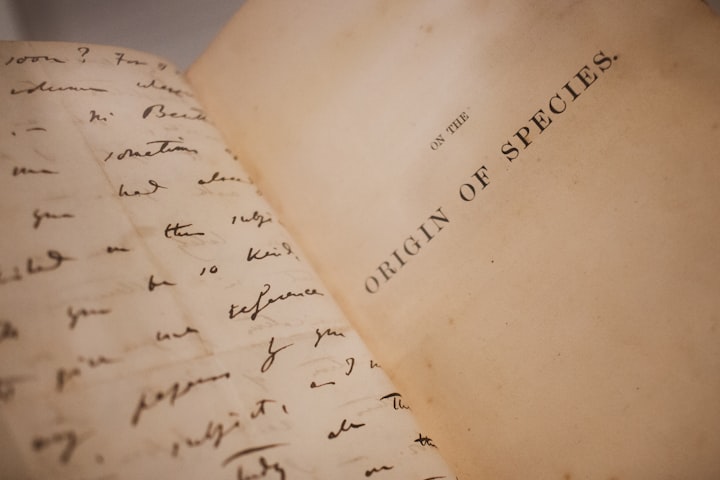This Flower Is Evolving to Survive a Post-Insect Environment
Wildflower Evolution Accelerates Amidst Pollinator Decline: Researchers Uncover Alarming Trends

Environmental changes are driving evolution at an unprecedented pace. The harsh reality of a changing climate isn’t only affecting human civilization and at-risk animal populations — ripples of the phenomenon are already visible everywhere. Recent studies have painted a picture of just how drastic these changes already are for life on earth, by focusing on the rapid adaptations of flowering plants. Due to the extreme effects human activity is having on insect population decline, flowers have begun to evolve to give up on insect-caused pollination.
The Decline of Insect Populations
For nearly forty years, scientists across the globe have witnessed a concerning decline in insect populations. Now, the newest research indicates that the decline is becoming more of a plummet. “More than 40% of insect species are declining and a third are endangered” reported The Guardian in 2019, “The rate of extinction is eight times faster than that of mammals, birds, and reptiles. The total mass of insects is falling by a precipitous 2.5% a year, according to the best data available, suggesting they could vanish within a century”.
The culprit for such a catastrophe is, not too surprisingly, us lovely humans and our pronounced ability to shape the world around us. Habitat loss, pollution, pesticides, and climate change are shaping up to be the main factors that are harming bug populations, making survival remarkably difficult for species in every corner of the globe.
When insects continue to decline in the next few decades, it won’t only be the insects (and the entomologists) who suffer. As a massive portion of every single ecosystem on earth, insects are a foundational species, supporting the balance of life in a myriad of ways. Not only are insects a source of food for a significant portion of animals, but they are also one of the principal pollinators of our food crops and natural plants, one of our best sources of decomposition, and an invaluable source of pest control. The loss of insects would be akin to ripping the foundation out from underneath your house while the walls still stand above it.
Floral Evolution in Response to the Decline of Insects
Late last year, researchers documented a set of intriguing changes in the characteristics of a species of wildflower in France. The study, which was published in the journal New Phytologist in late December 2023, compared the wild pansy species that grew from modern seeds to seeds from ancestors of the same species, collected and preserved between 1990 and 2002. The results were significant and startling. The researchers observed a stark decrease in “plant-insect mediating traits”, which are the traits that flowers use to advertise their pollen to insects that traditionally have helped them breed. Over the last few decades, this species of flower saw a decrease in size, a muting of coloration, and a decrease in the prominence of nectar guides, which are used by flowers to point insects toward their nectar.

The team also found in a genetic analysis, that there was a significant increase in the amount of selfing (the scientific term for when a flower uses its own pollen to fertilize itself). By reducing their reliance on insect pollinators, these flowers are safeguarding their reproductive success in this new and uncertain ecological landscape we’re entering into.
Ecological Implications of Rapid Floral Evolution
The research is an incredible, observable instance of evolution, which is fascinating in its own right. But, zooming out, this sample species shifting so quickly is cause for much environmental alarm. Because of the major and rapid shift, the scientists see the results of the experiment as a concerning indicator of just how intensely our deforestation, pollution, and other means of environmental harm are shifting the wild species on our planet. Because of human-caused insect declines, flowers are finding that it’s too much effort to produce costly insect attractors like nectar and bright colors. These flowers no longer gain as much from insects as did their ancestors a mere 30 years ago. In our lifetimes, it has become more evolutionarily advantageous for Viola arvensis to spend less energy on insect advertisement.
On the surface, it may appear like the shift to selfing is a solution to the impending insect diversity loss that’s expected in the next few decades. The researchers of the study, however, paint a more alarming picture, “This evolutionary transition is classically considered to be irreversible […] Evolution towards selfing could thus be driven by natural selection over the short term but could impede long-term plant population survival.” When a species transitions towards selfing instead of pollinating with other individuals, it limits the genetic diversity of its offspring, which can result in reduced response to future selective pressures like disease or climate change.
Additionally, the study notes that the decrease in pollen and nectar availability could put additional pressure on the already struggling populations of insect pollinators. Essentially, the researchers believe that this study is highlighting the beginning warning signs of a dangerous positive feedback loop. This feedback loop indicates a trophic collapse which, unmitigated, has the potential to have catastrophic effects worldwide.
–
This study focuses on one species of wildflower and, though profound, does not yet indicate a general shift in global flower species. According to the researchers, there is indeed an “urgent need to investigate whether these results are symptomatic of a broader pattern among angiosperms and their pollinators”. Until more scientists corroborate these findings across the planet with additional floral species, we won’t know for certain if Viola arvensis is an example of an outlier. But, if it is indeed an example of a broad, global problem, “understanding whether there is a possibility to reverse this process and break this eco-evolutionary-positive feedback loop” is of the utmost importance for the future of every single ecosystem we inhabit.
Either way, efforts to conserve both floral diversity and insect populations are essential for maintaining ecosystem health and resilience. Conservation initiatives aimed at preserving pollinator habitats, reducing pesticide usage, and mitigating the effects of climate change are crucial steps in safeguarding the intricate relationships between plants and pollinators. Education, as always, is important too. Fostering public awareness and engagement in pollinator conservation efforts is paramount for securing the future of our natural world.
As stewards of this planet, it is our responsibility to ensure that the beauty and diversity of flowers continue to enrich our world for generations to come. To learn more about how you can help pollinators, check out this article by the US Fish and Wildlife Service.
--
Cross-Posted from Medium. Follow My Account for New Articles Every Friday!
About the Creator
Olivia L. Dobbs
Science Enthusiast, Naturalist, Dreamer, Nerd.
I crosspost my Medium articles here :)
You can find my main account on Medium: https://medium.com/@oliviadobbs13
Check out my science! -> bit.ly/DobbsEtAl
Reader insights
Outstanding
Excellent work. Looking forward to reading more!
Top insight
Expert insights and opinions
Arguments were carefully researched and presented






Comments (2)
This is very interesting, well done!
I hope we can save the pollinators’! Great work! Fantastically written!